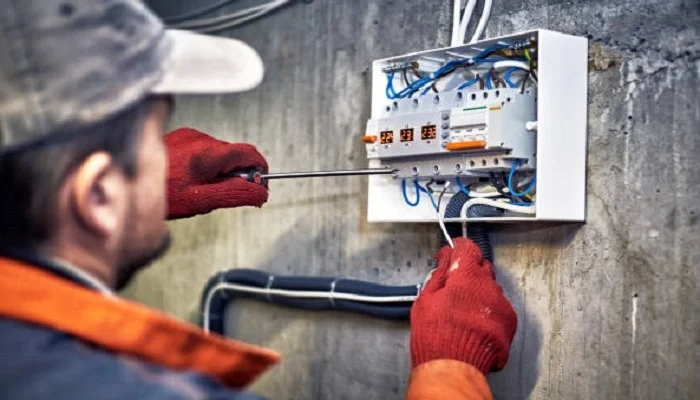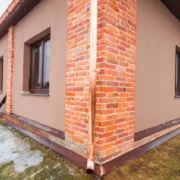Introduction to Electrical Panel Upgrades
The electrical panel, commonly known as the breaker box, is the core of your home’s electrical system, managing the electricity that flows through its circuits. This seemingly unassuming gray box is crucial, as it ensures that power is distributed safely and reliably to all of your home’s electrical components. However, as technology and household energy demands have evolved, so have the requirements for these panels. You’re likely considering whether should I upgrade my electrical panel to accommodate the growing electrical needs of modern life.
Your decision to upgrade may be driven by factors such as integrating high-energy appliances, home remodels, or simply the desire to enhance your home’s safety standards. Many homeowners unintentionally burden their existing electrical infrastructure by introducing more sophisticated electronics, sometimes leading to safety risks. Addressing these needs with an upgraded electrical panel aligns your home with today’s power demands and significantly mitigates potential hazards.
Why Upgrade Your Electrical Panel?
The primary impetus behind an electrical panel upgrade is the increasing demand for electricity in modern households. A typical home from the 1970s or earlier was designed to accommodate approximately 60–100 amps of power. Considering the influx of energy-hungry devices like high-capacity HVAC systems, electric vehicle chargers, and advanced kitchen appliances, it becomes apparent that older panels are often insufficient. You can effectively meet current and future electrical needs by ensuring your panel can support at least 200 amps. Home improvement experts say upgrading becomes particularly crucial when renovating or adding extensions that demand more power. According to This Old House, the cost to upgrade an electrical panel can vary widely depending on factors such as amperage, location, and complexity. Still, the investment is often necessary to ensure safe and reliable power distribution.
Beyond convenience, safety is a significant concern for many homeowners contemplating an upgrade. Older panels, especially those with fuses, are prone to malfunctions that can lead to electrification concerns or even fires. By swapping out these outdated systems, you prioritize the safety of your home’s occupants and infrastructure.
Recognizing the Signs Your Panel Needs an Upgrade
Regular maintenance is needed to keep your home’s electricity system in good shape. Seeing small problems as soon as possible is very important. Frequent tripping of circuit breakers is one of the first signs that you might need to improve. In most cases, this means that your current panel isn’t strong enough to handle your electrical needs and is taking too much power. Unusual sounds or smells near the panel, lights that flicker or dim, and power blackouts that you can’t explain in certain parts of your home are also red flags. Angeli says that these signs should not be ignored, especially if the electrical system is old, because they could mean that there are major problems deeper down.
Old age of your panel is another sign. It’s possible that systems that are more than 25 years old are not only out of date, but also dangerous. It’s clear and pressing to upgrade when you add these things to today’s higher technological needs. Before small problems get worse and become major electrical problems or safety risks, a proactive review can stop them.
Benefits of Modern Electrical Panels
Updating to a modern electrical panel has many benefits that will make your house safer and more energy-efficient. Today’s circuit breakers are much safer because they act quickly to overloads, which lowers the risk of electrical fires. Also, these panels often come with high-tech features like surge safety and the ability to work with smart technology. This state-of-the-art integration let’s homes keep an eye on and manage their power use, which could mean lower energy bills.
By using this kind of technology, you can keep your home at the cutting edge of safety and energy economy. These days, sustainability is very important. New electricity panels make it easy for people to use different types of energy and new technologies, making their homes more flexible and better for the environment.
Steps to Upgrade Your Electrical Panel
Upgrading your electricity panel means making it work better by putting safety and compliance first every time. The process starts with a licensed electrician figuring out what your home needs. They will help figure out the right panel size based on how much energy is being used now and how much is expected to be used in the future. It is important to make sure that all power sources are turned off before disconnecting the old panels safely. The new panel is put in place, and all of the electrical connections are carefully checked to make sure they work right. How hard this process is may depend on how old the old system is and how much of a change it needs. Even so, it is necessary to keep the structure strong and the operations running smoothly.
Cost Considerations and Budgeting
The journey toward an upgraded electrical panel represents a significant financial investment, but understanding the economic landscape can ease budgeting. Costs are primarily dependent on the capacity of the new panel, labor fees, any necessary rewiring, and potential additional upgrades, such as integrating innovative technology into the system.
Homeowners are encouraged to solicit quotes from various professionals to secure competitive rates and ensure project transparency. While upfront costs can be daunting, the long-term financial benefits, such as enhanced energy efficiency and reduced maintenance needs, are worth considering. Government incentives or rebates often alleviate initial costs, particularly for energy-efficient installations.
Hiring the Right Professional for the Job
It is very important to hire the right professional for your electrical panel change to make sure it goes well and is safe. A registered, experienced electrician will help with the right installation and make sure that all of the tools and methods used are safe and up to code in your area. Check the professional’s qualifications and look at reviews or suggestions from people you trust when you’re hiring someone.
It is very important to talk to your plumber in a clear and honest way. The electrician can do a better job if you talk to them in detail about your home’s present and future power needs.
Final Thoughts and Tips for Homeowners
When you finish upgrading your electrical panel, you’re not just finished with the job; you’re also making a promise to protect your home’s electrical future. After an upgrade, it’s important to keep up with maintenance, which includes regular checks for problems and exams.
By spending money to improve their electrical panels, homeowners show that they are ready for new technologies and higher energy needs. The result is a safer home environment and progress toward better comfort and energy economy. Putting this important home improvement at the top of your list is necessary for a peaceful and secure living space.
Choice Home Warranty George Foreman in 2025










Comments